1986 Austrian Grand Prix race report
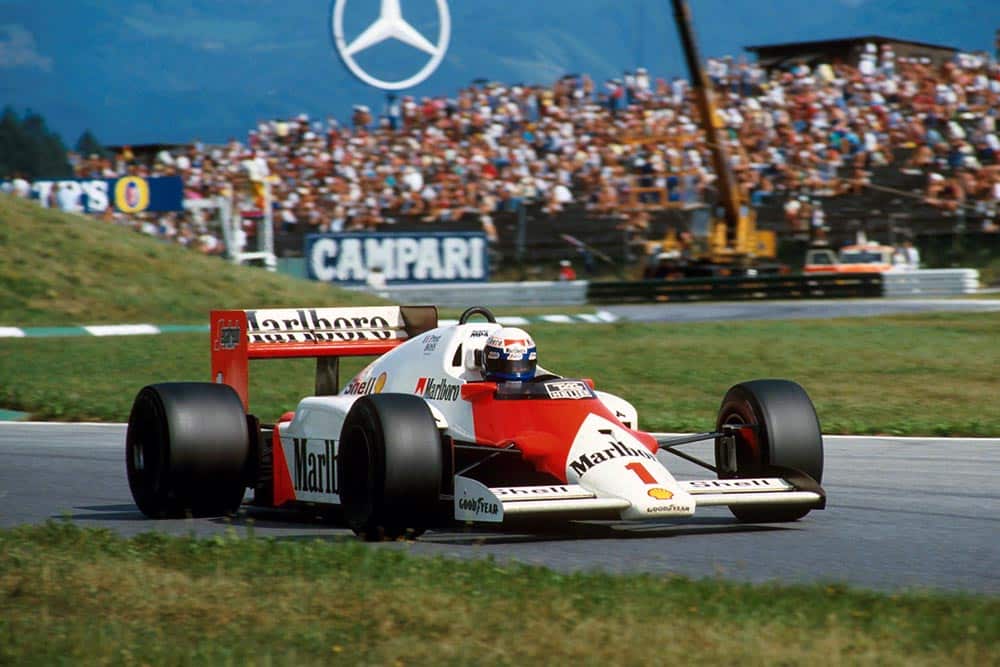
Alain Prost scored an emphatic victory for McLaren by lapping the entire field
Motorsport Images
Seventh out of ten
The Grand Prix circus finished a hectic ten week schedule at the Osterreichring on August 17th during which period no fewer than seven rounds of the World Championship had taken place on two Continents. To say that the pressure was beginning to tell on personnel and equipment would be something of an understatement by the time the transporters were packed up after Alain Prost’s success on this superbly spectacular circuit in the Styrian countryside.
When the history books are written about the 1986 season, I wonder just how many historians will recall the significance and the organisational pressure of those seven midsummer weeks. When we all trailed off to Montreal for the Canadian Grand Prix, it was in the wake of Nigel Mansell’s first victory of the season. Nelson Piquet’s Williams-Honda had stopped with imminent engine trouble whilst commandingly in control of the Belgian GP at Spa Francorchamps and Mansell stepped into the breach like a good team-mate should do. But Piquet was the class of the field and had been under no pressure at all. Many people believed he was already stroking his way to the World Championship.
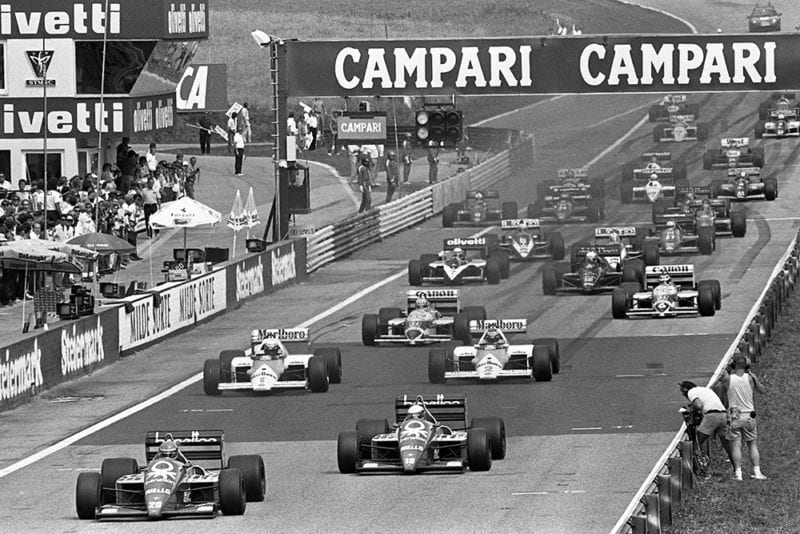
As the lights go out Gerhard Berger leads in the Benetton
Motorsport Images
By the time we arrived in Austria, the Williams-Hondas were virtually out of sight as far as the Constructors’ Championship was concerned. Mansell had won in Canada, France and Britain and Piquet, following a worrying mid-season lull during which he seemed to have lost his confidence, bounced back to win in Germany and Hungary. Apart from Detroit, where Ayrton Senna’s Lotus won brilliantly and the Williams-Honda duo hit trouble, there had not been a race in which the Anglo-Japanese partnership had been anything less than the class of the field.
Then came the Osterreichring and the sight of two Benetton-BMWs side-by-side on the front row of the grid. At first glance it looked like a freak performance in the best Austrian GP tradition, for this fine track has a history of throwing up strange results. Ten years earlier John Watson had performed faultlessly to win in the Penske PC4, the marque’s sole GP success: it took almost another five years before “Wattie” made his second visit to the GP winner’s circle!
A year earlier, Vittorio Brambilla’s works March 751 had speedboated its way to victory in a rain-shortened event and, a year later, Alan Jones gave the Shadow team its only GP triumph. Now we had the Benetton-BMWs right on the pace and another outsider’s victory in prospect. But, in reality, things were not quite as unusual as they appeared at first glance.
With the works Brabham team floundering, the aerodynamically effective Rory Byrne-designed Benettons, with their “upright” BMW engines, have been steadily gaining ground all season. At Brands Hatch Gerhard Berger was the only driver to get on even brief terms with the Williams-Hondas and ran a strong third before retiring; at Hockenheim he qualified fourth and chased Senna briefly in the early stages; at Hungary he was fourth after a steady climb through the field, again before retiring.
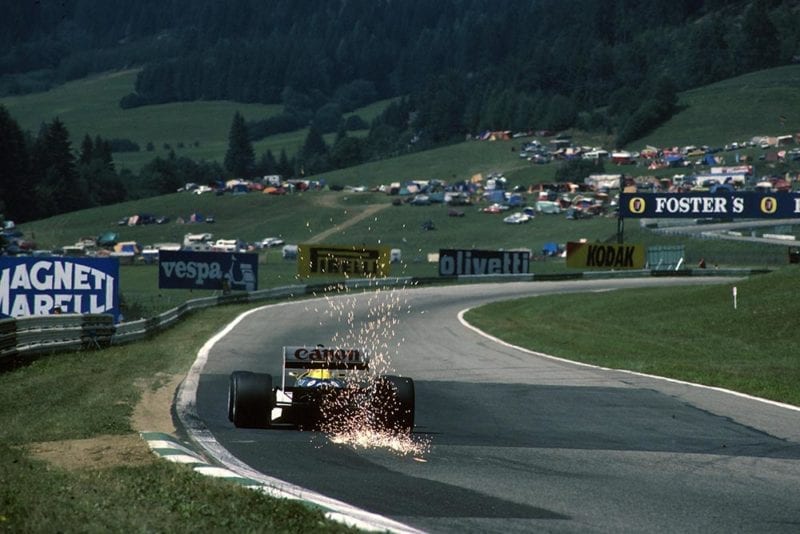
Piquet retired with an engine issue halfway through the race
Motorsport Images
At Osterreichring the Benettons had the power, the tyres, and two drivers who love high speed circuits calling for precision driving. Teo Fabi beat his team-mate for the distinction of taking fastest time, an appropriate distinction, perhaps, that the man starting from pole position on the fastest circuit included on the 1986 calendar should, three years earlier, have started from pole position at Indianapolis, a circuit on which precision and judgment is everything.
However, although Berger and Fabi rushed away from the opposition at the start of the race, both ran into trouble. Fabi’s B186 jumped out of gear early on, over-revving its engine, after which the Italian reported that it had lost its edge and obviously was not going to last. Seconds after he had taken the lead from his team-mate, it suddenly lost power and began running roughly, so that was the end of that…
Berger, however, looked on course to become a national hero in the wake of Niki Lauda. He was well in control of the race, looking smooth and unflustered, when he complained of a serious misfire when he came in for a tyre change. It transpired that the car’s battery had suffered an internal breakage and Berger lost almost five laps while it was replaced. Undaunted, he resumed the chase and stormed back to seventh at the chequered flag, having set the race’s fastest lap in the process.
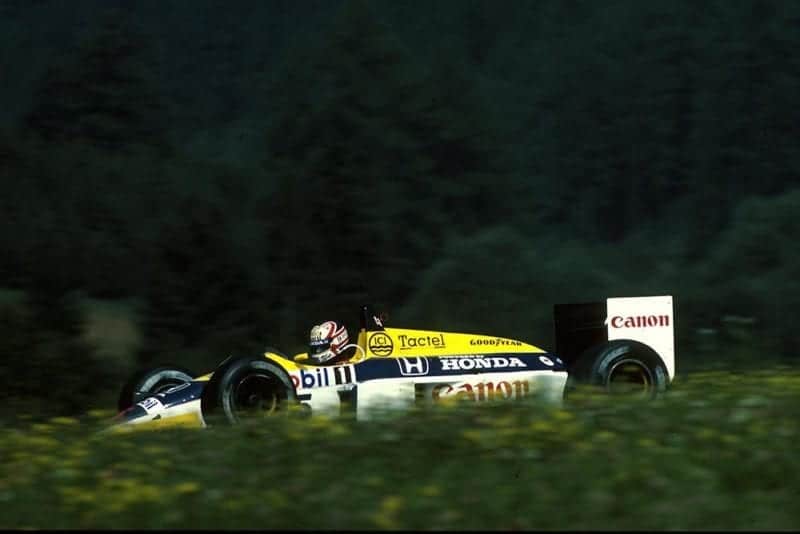
Nigel Mansell retired on lap 32 with mechanical issues
Motorsport Images
Of the four regular top runners, the quartet of World Championship contenders, only one survived to the finish: Alain Prost. From the start the reigning World Champion had run in third place, chasing the Benettons as hard as he could, and, after all the routine tyre stops had been completed and Berger had been delayed, found himself in a comfortable lead. Mansell’s Williams-Honda was the only potential challenger in second place, although the Englishman was not making any ground on the McLaren and eventually retired with a broken driveshaft constant velocity joint. That was probably just as well for Prost, because his McLaren developed a pick-up problem over the last eight laps of the race and was actually cutting out two or three times a lap as the Frenchman nursed it home to his 24th career victory, a record which matches Juan-Manuel Fangio’s achievement.
The other McLaren, driven by Keke Rosberg, held second place until an electrical short-circuit caused his retirement in the closing stages of the race, allowing the Ferrari F186s of Michele Alboreto and Stefan Johansson into second and third places, the reward for consistent reliability on a day when so many leading lights failed to finish. The Team Haas Lola-Fords also managed top six finishes on this occasion, Alan Jones coming home fourth, despite a badly slipping clutch, and Patrick Tambay fifth. After the race the genial Frenchman was confronted by an irate Stefan Johansson, the Swede really “tearing him off a strip” for alleged baulking during their brief battle in the second half of the race. It seemed that after almost ten continuous weeks on the road, even normally placid tempers were becoming frayed…
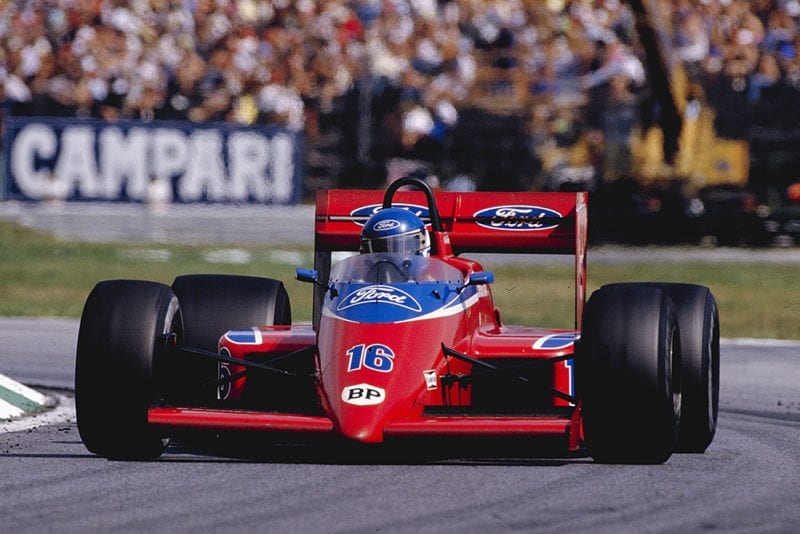
Patrick Tambay scored two points for Haas with 5th
Motorsport Images
Further down the field, Nelson Piquet’s Williams retired with an overheating engine, the Brazilian having to play second fiddle to Mansell on this occasion, while Ayrton Senna’s Lotus 98T misfired into the pit lane for good after a dozen laps, the Renault-engined car never having looked a threat all weekend. Dumfries also retired the second Lotus, a spark plug jamming in the cylinder head as mechanics tried to change it, while both Tyrrells also succumbed to heat-related problems in the scorching conditions.
It was also extremely interesting to note that the Osterreichring crowd, normally gigantic, was quite remarkably small: smaller, in fact, than any Austrian GP the writer can recall since the Watson win in ’76. The reason for the small crowd then was two-fold; Ferrari was not represented following Niki Lauda’s crash at the Nürburgring and the Austrian hero was recovering in hospital from those serious injuries.
I actually suggested to Lauda, who was on hand to help the hyper-enthusiastic Heinz Pruller with the Austrian television coverage, that his absence from the cockpit might be a contributory factor behind the small crowd. Typically, he refused to accept such overt flattery and disagreed!
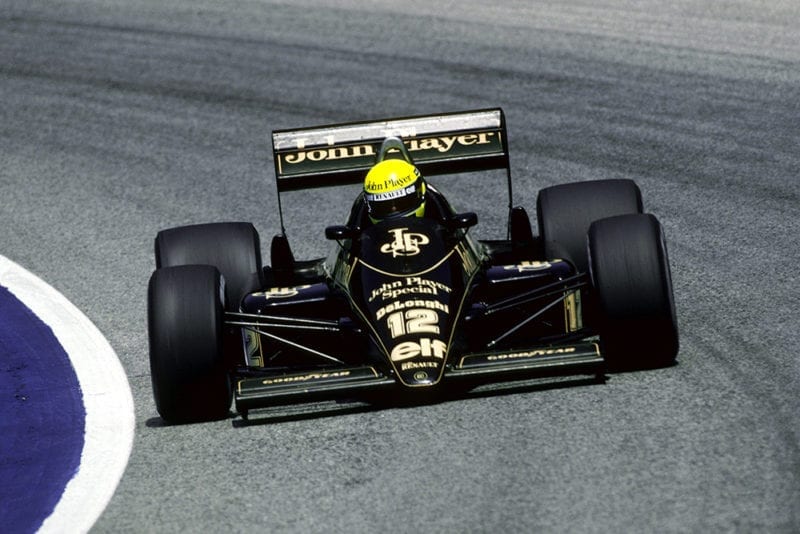
Ayrton Senna retired from the race on lap 14 with a blown engine
Motorsport Images
“The real reason why there’s nobody here is that we’ve just had the Hungarian Grand Prix last weekend,” he explained. “A lot of people decided to go to Budapest for a change and can’t afford to go to another race the next weekend!” That seemed perfectly logical to me; Budapest is hardly any further from Vienna and the Austrians have no access problems. However, if that is the case, the Osterreichring organisers can expect small crowds in the future, for as long as the Hungarian GP is on the calendar — which promises to be some time, to judge by the enthusiasm with which the race was received — it is certain to be “paired” with the Austrian race. Perhaps, within a couple of years, we will find ourselves going to Austria first and then on to Budapest the following weekend. If that happens, then I suspect we’ll all know why.
My colleague D.S.J. and I have agreed that any driver nearing a 25 per cent victory record must be regarded as a serious Formula 1 contender, because at the end of the day winning is the name of the game. “Ifs and buts” don’t count, even though they are the two most frequently-used words in the motor racing vocabulary. It was therefore interesting, prior to Monza, to examine the statistics.
Prost had won 24 out of 101; Piquet 15 out of 122; Senna 4 out of 42 and Mansell 6 out of 86. Even the most elementary student of mathematics can work out that Prost is by far the most successful driver of the quartet, and yet there are still people who do not believe he is the best, by far, of the current bunch. Unlike Piquet, Prost does not often have bad days and I find it particularly interesting that Mansell regards the Frenchman as the best driver in the business today. That suggests to me that Nigel has kept a steady head on his shoulders through all his recent Grand Prix success although, somehow, I cannot see Piquet or Senna ever acknowledging anybody might be better than them in the long term. And that assumption of their own personal excellence might just be a key to their own personal Achilles heel. — A.H.
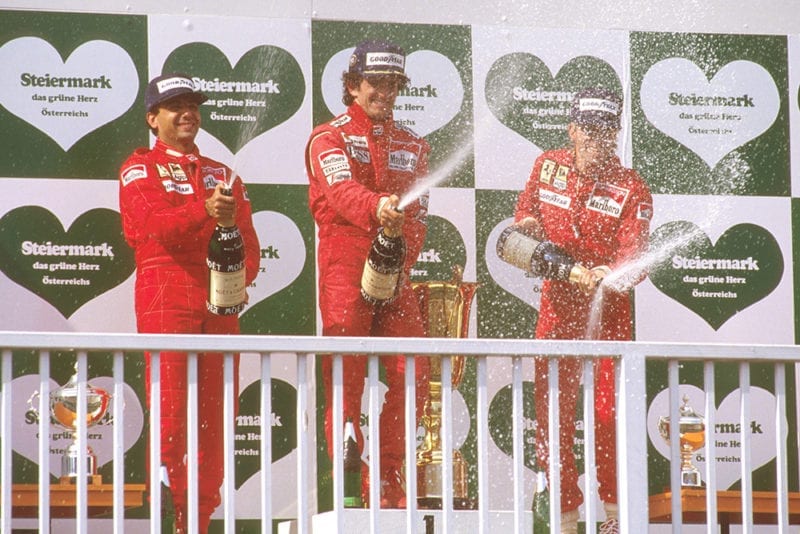
Prost, Alboreto (left) and Johansson celebrate on the podium
Motorsport Images
Results (top five) — Austrian Grand Prix, Osterreichring, 17 August
52 laps of 5.942 km circuit. 308.984 kilometres (191.993 miles)
1. Alain Prost (McLaren MP4-2C/Porsche V6) — 1hr 21min 22.531sec
2. Michele Alboreto (Ferrari F186/Ferrari V6) — 1 lap behind
3. Stefan Johansson (Ferrari F186/Ferrari V6) — 2 laps behind
4. Alan Jones (Lola THL2/86-Ford V6) — 2 laps behind
5. Patrick Tambay (Lola THL2/86-Ford V6) — 2 laps behind
Conditions: Very warm
Winner’s Avg. Speed: 227.821 kph
Fastest lap: G. Berger (Benetton B186/BMW 4-cyl), 1min 29.444sec on lap 49 , av.232.157kph
